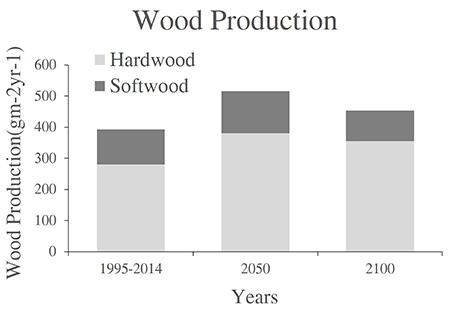An NSRC Working Group for Improved Modeling of Northern Forest Ecosystems

Northeastern forests provide the region's inhabitants with valuable services, including fuel, fiber, and clean water, along with nutrient cycling, carbon storage, and climate regulation. With expected changes in climate, atmospheric composition, and land use, the degree to which these services can be maintained into the future is highly uncertain. Our ability to make reliable projections will depend on improved assessments of ecosystem processes and development of models that accurately simulate carbon, nitrogen, and water cycling under a range of environmental conditions and forest management scenarios. Scientists and managers need an improved model designed explicitly to simulate the effects of multiple environmental stressors on forest productivity, water quality and quantity, and carbon storage in northern forests.
NSRC researchers held a workshop of 16 scientists who identified ways to improve the PnET model (used for estimating forest photosynthesis and evapo-transpiration, which provide measures of forest productivity). They modified the model for application in predicting changes in Northern Forest carbon, nitrogen, and water cycles under future scenarios of climate, atmospheric composition, and forest management.
Researchers established a users’ group and developed a users’ manual for the improved PnET model which are available online (http://www.pnet.sr.unh.edu/). Simulations with the improved model indicate that future climate and land use will likely increase aboveground carbon stocks in northeastern forests and increase nitrogen export in streams. Climate will play an important role in determining the resources provided by northern forests, and forest managers will need to consider the effects of a changing climate.
